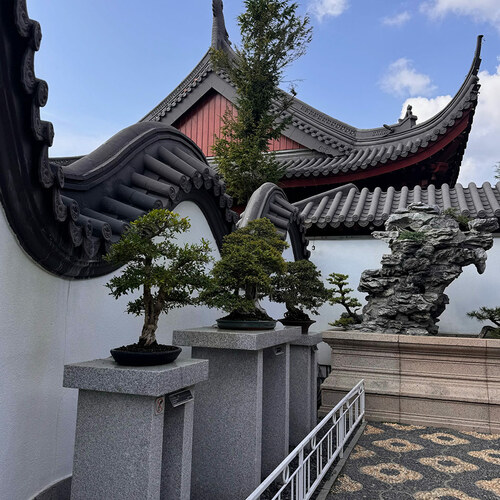
Hi GPODers!
It’s been a minute since we’ve heard from frequent contributor and friend-of-the-blog, Cherry Ong. If you’re new to Garden Photo of the Day, you’ll want to check out her fabulous side garden dubbed the “Fern Fairway”: The Fern Fairway in Summer, Fall in the Fern Fairway, Winter at the Fern Fairway. Then explore some of her incredible wreaths, arrangements, and containers: Container Creativity in British Columbia, Container Crevice Garden, Wreath Making with Cherry, Make a DIY Christmas Wreath. Finally, tour across Canada via her many travels to incredible private and public gardens: Where’s Cherry? Tofino Botanical Gardens, GPOD on the Road: Garden Tour With Cherry, GPOD on the Road: Niagara-on-the-Lake, GPOD on the Road: Allan Gardens Conservatory.
In typical Cherry fashion, she has spent the summer traveling and visiting beautiful gardens that she so graciously shares with us. Today and tomorrow, she’s taking us to Montreal Botanical Garden and it’s serene Chinese Garden. First, a look at the special plantings in the Springtime Courtyard (Le Cour du Printemps), crafted with an ancient technique.
These are not bonsai!
This space, ringed with an undulating wall resembling a dragon’s back, is filled with penjings, miniature landscapes growing in containers. These dwarfed trees are the forerunner of Japanese bonsai, but they differ from bonsai mainly in that they represent nature in a realistic, non-idealized fashion. Their branches and roots are pruned to imitate the strength, hardiness and elegance of trees growing in the wild.
The Montreal Botanical Garden’s penjing collection consists mainly of 350 miniature trees donated to Montreal by the city of Shanghai to mark the Floralies Internationles held here in 1980.
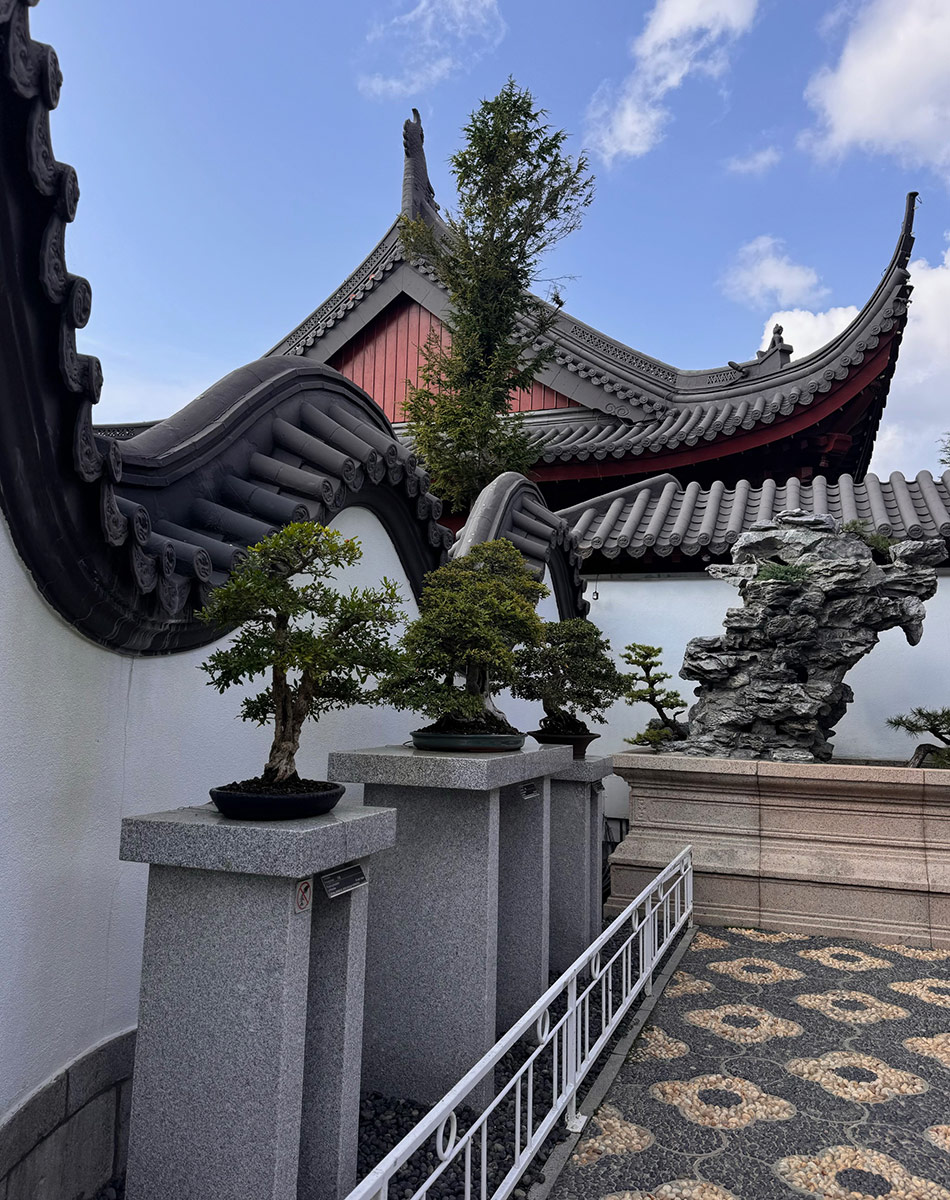 I love Cherry’s description of these ornate walls as “a dragon’s back”. Paired with the intricate stone work on the flooring and the abstract shapes of stone structures, the space is full of fascinating textures that give the feeling of movement.
I love Cherry’s description of these ornate walls as “a dragon’s back”. Paired with the intricate stone work on the flooring and the abstract shapes of stone structures, the space is full of fascinating textures that give the feeling of movement.
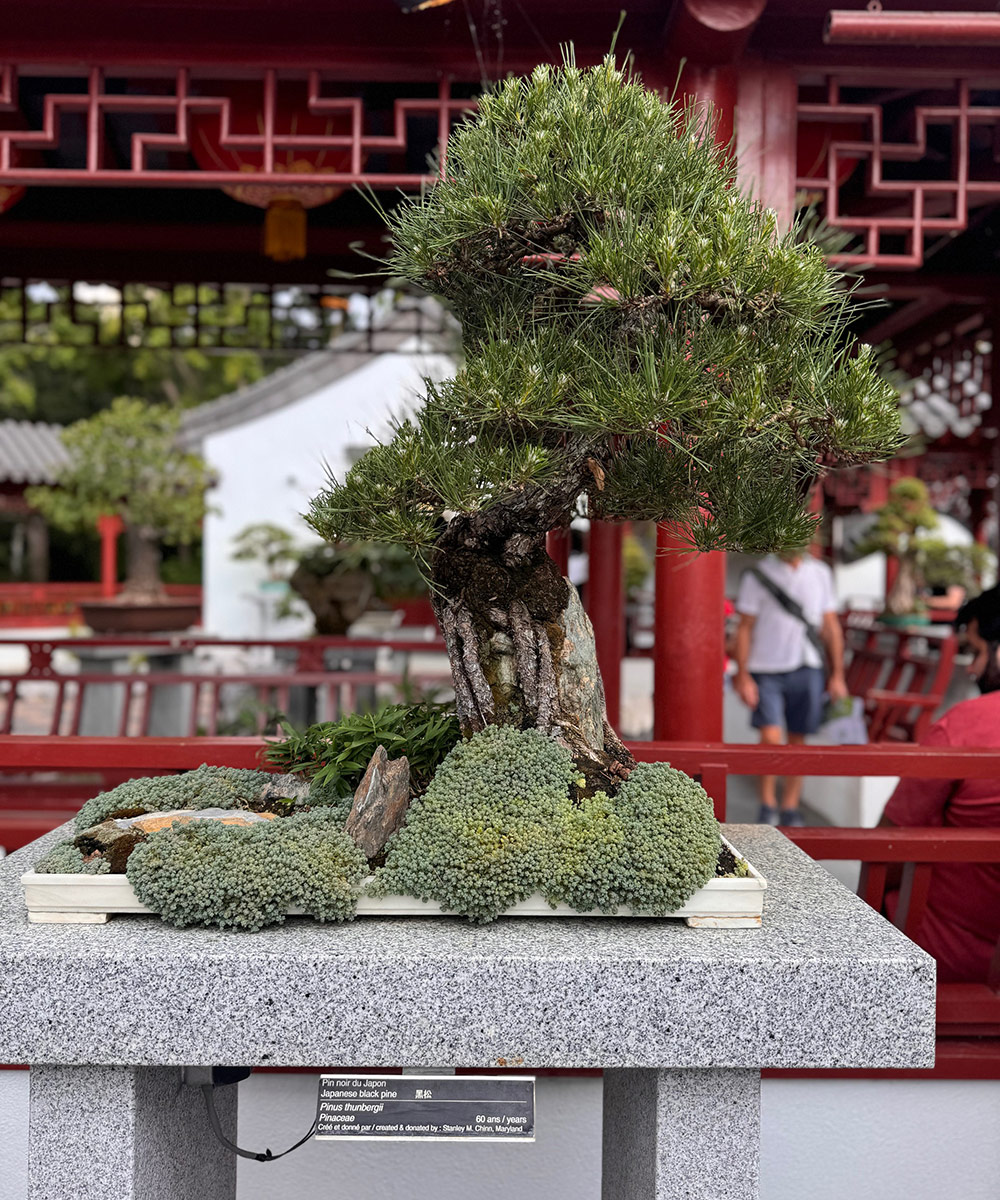 Of course, the real stars of the show are the awe-inspiring penjing. This spiky Japanese black pine (Pinus thunbergii, Zones 5–8) might be my favorite of the photos Cherry sent over. After you’ve scrolled through, let me know which is your favorite in the comments.
Of course, the real stars of the show are the awe-inspiring penjing. This spiky Japanese black pine (Pinus thunbergii, Zones 5–8) might be my favorite of the photos Cherry sent over. After you’ve scrolled through, let me know which is your favorite in the comments.
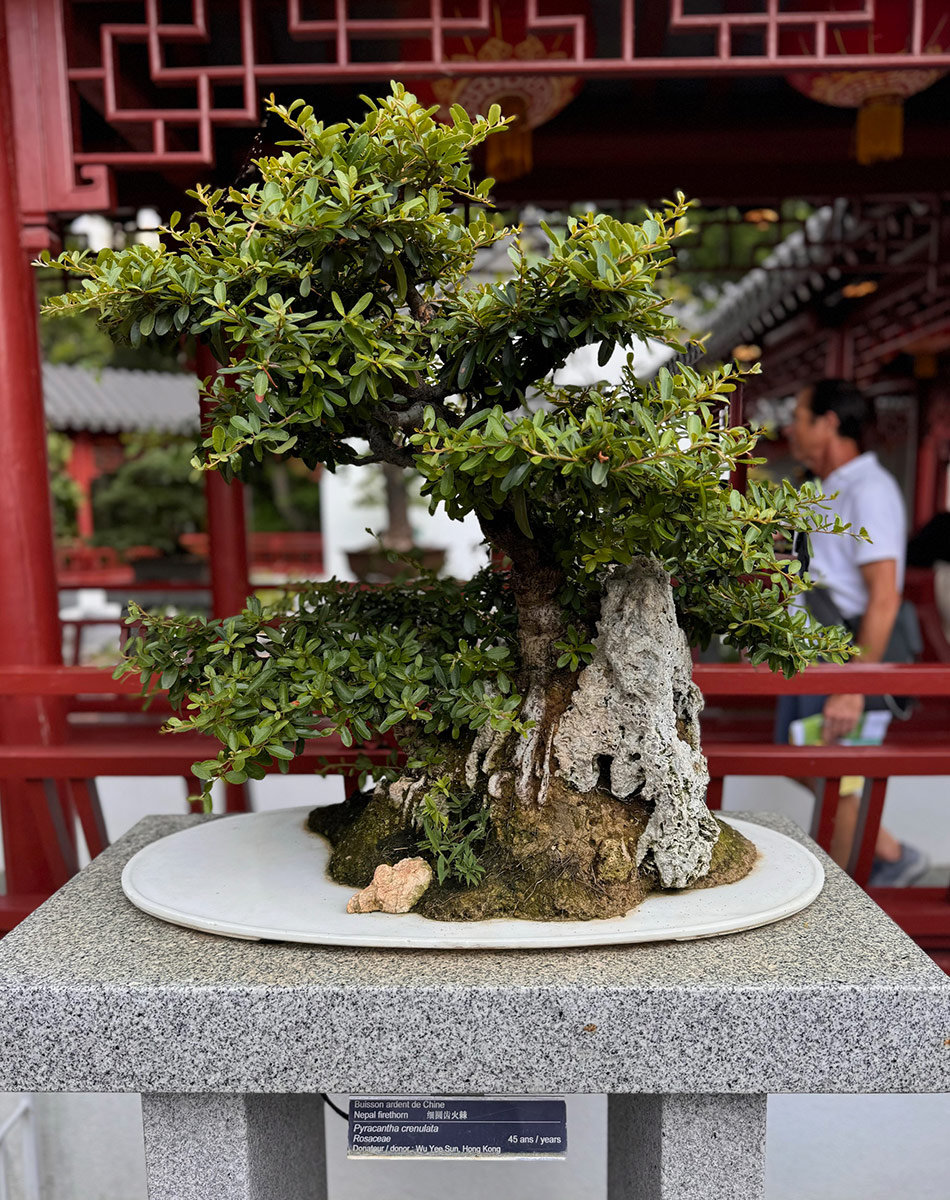 What I’m already appreciating about penjing is the way these trees look as if they’ve been ripped from their natural habitat and shrunk down to table-top size. Nepal firethorn (Pyracantha crenulata, Zones 5–8) grows naturally in barren and rocky landscapes, so the miniature stones and minimal growing material on this dish is actually its perfect habitat.
What I’m already appreciating about penjing is the way these trees look as if they’ve been ripped from their natural habitat and shrunk down to table-top size. Nepal firethorn (Pyracantha crenulata, Zones 5–8) grows naturally in barren and rocky landscapes, so the miniature stones and minimal growing material on this dish is actually its perfect habitat.
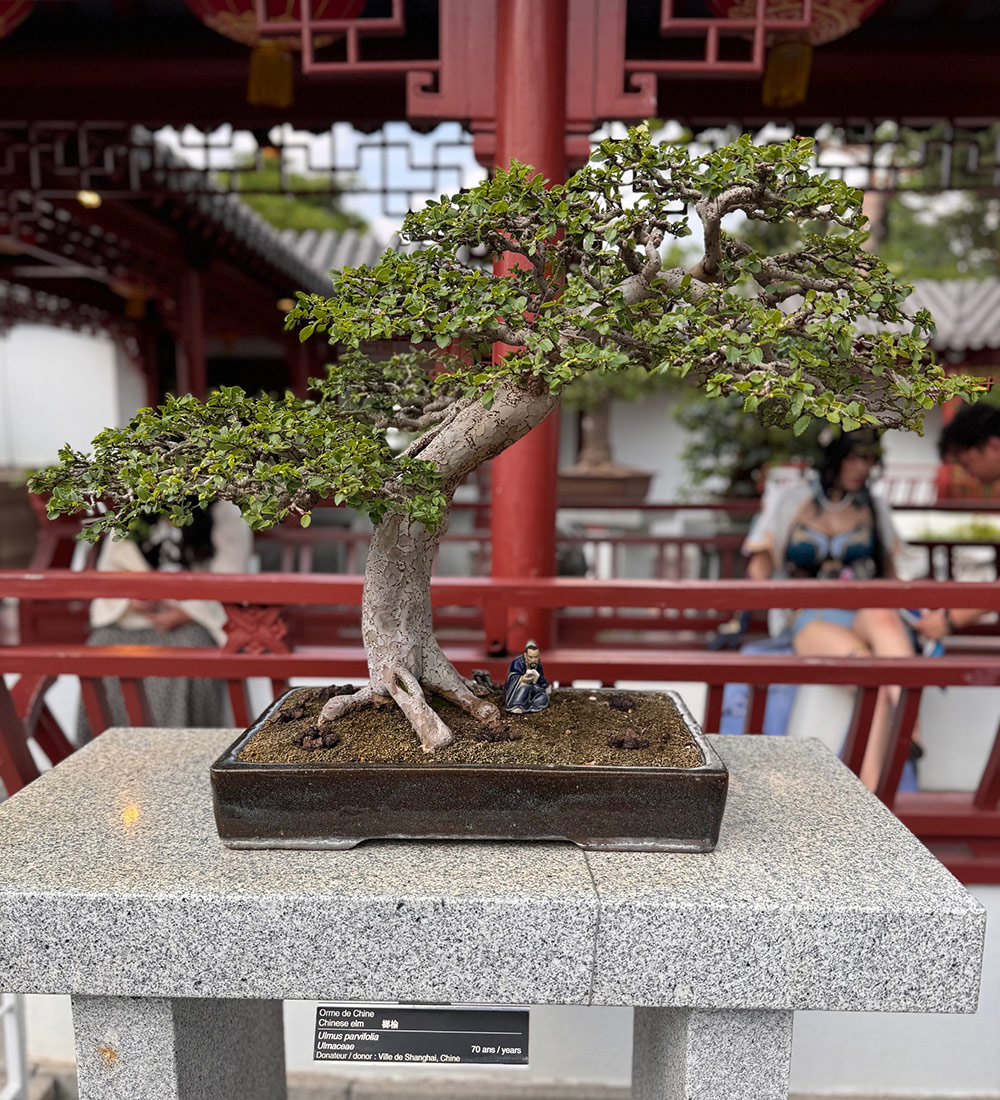 The use of a figure with this Chinese elm (Ulmus parvifolia, Zones 5–9) also helps to paint a scene and bring the miniature landscape to life.
The use of a figure with this Chinese elm (Ulmus parvifolia, Zones 5–9) also helps to paint a scene and bring the miniature landscape to life.
 I also love that each penjing is absolutely unique, no two can be confused. A true representation of nature and the individuality of all living things. This Chinese hackberry (Celtis sinensis, Zones 7–9) could be grown to look similar to the Chinese elm above, but its three separate trunks give it a distinctly different look.
I also love that each penjing is absolutely unique, no two can be confused. A true representation of nature and the individuality of all living things. This Chinese hackberry (Celtis sinensis, Zones 7–9) could be grown to look similar to the Chinese elm above, but its three separate trunks give it a distinctly different look.
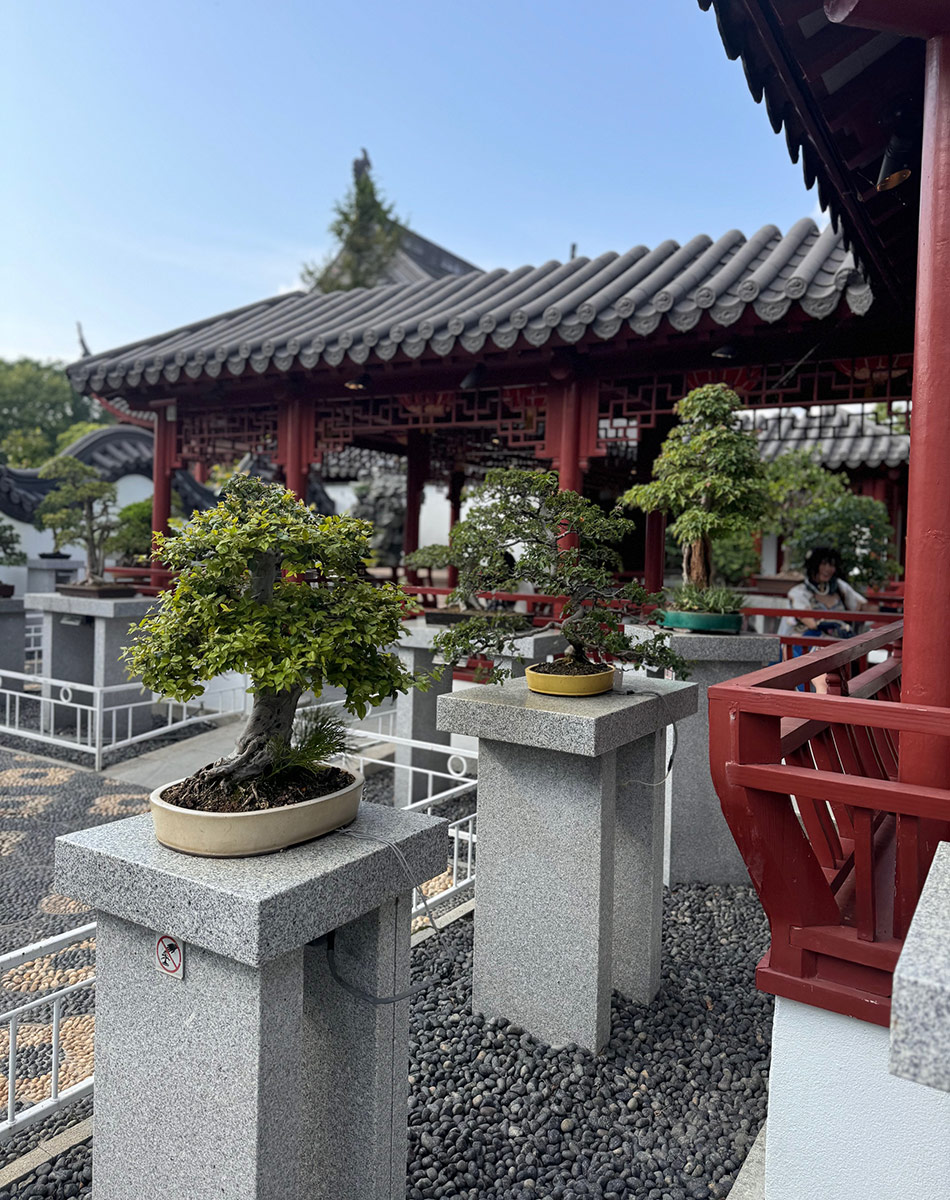 Just getting a peek at the many other penjing on display, you can see so many different shapes and forms.
Just getting a peek at the many other penjing on display, you can see so many different shapes and forms.
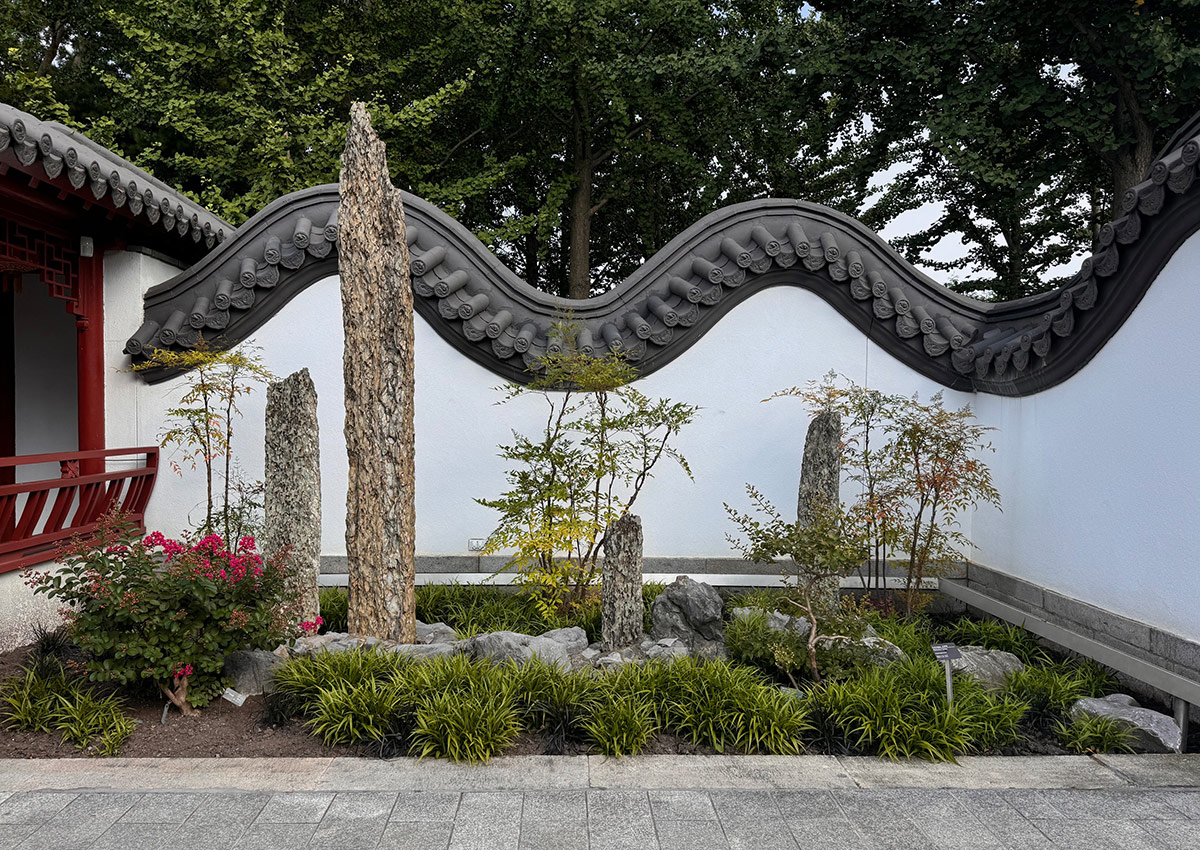 While undoubtable a highlight, penjings aren’t the only thing to see in the courtyard. All types of plants native to China can be enjoyed.
While undoubtable a highlight, penjings aren’t the only thing to see in the courtyard. All types of plants native to China can be enjoyed.
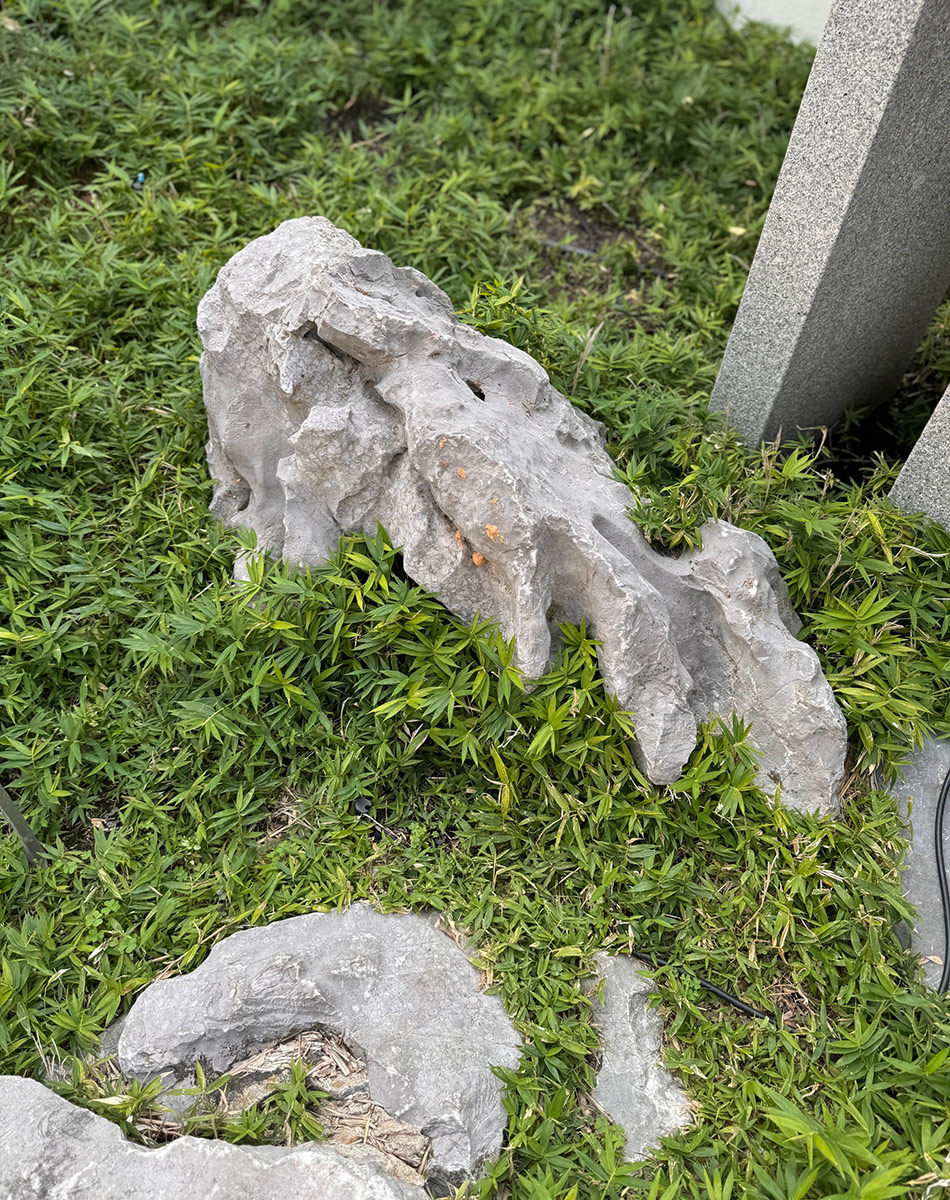 Of course, several plants native to Asia, like this Japanese stiltgrass (Microstegium vimineum), are highly invasive in North America. Having these plants confined and monitored in a botanical garden setting allow visitors to enjoy and appreciate them without the damage that they can cause in our landscapes.
Of course, several plants native to Asia, like this Japanese stiltgrass (Microstegium vimineum), are highly invasive in North America. Having these plants confined and monitored in a botanical garden setting allow visitors to enjoy and appreciate them without the damage that they can cause in our landscapes.
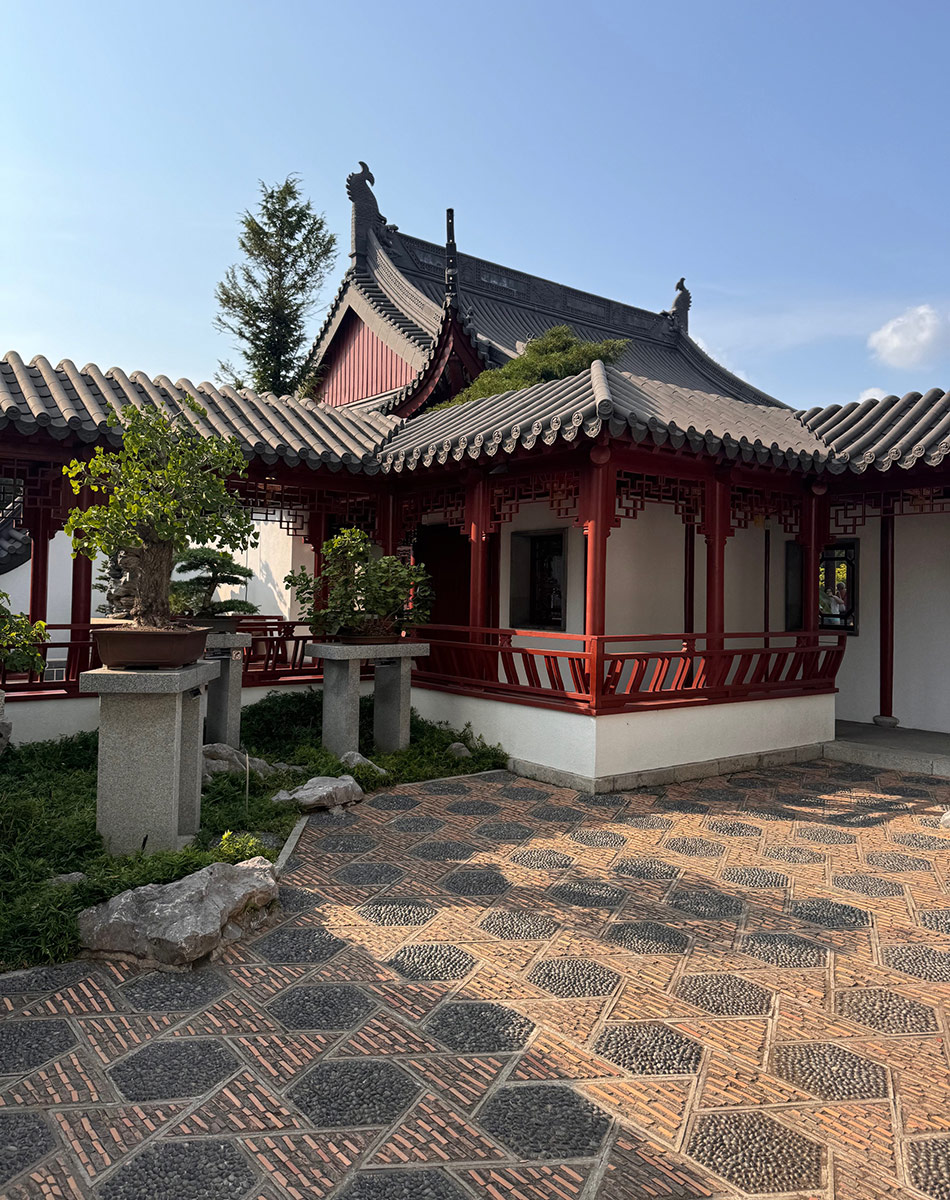 And, as already mentioned, the architecture and hardscaping are also elements worthy of marveling.
And, as already mentioned, the architecture and hardscaping are also elements worthy of marveling.
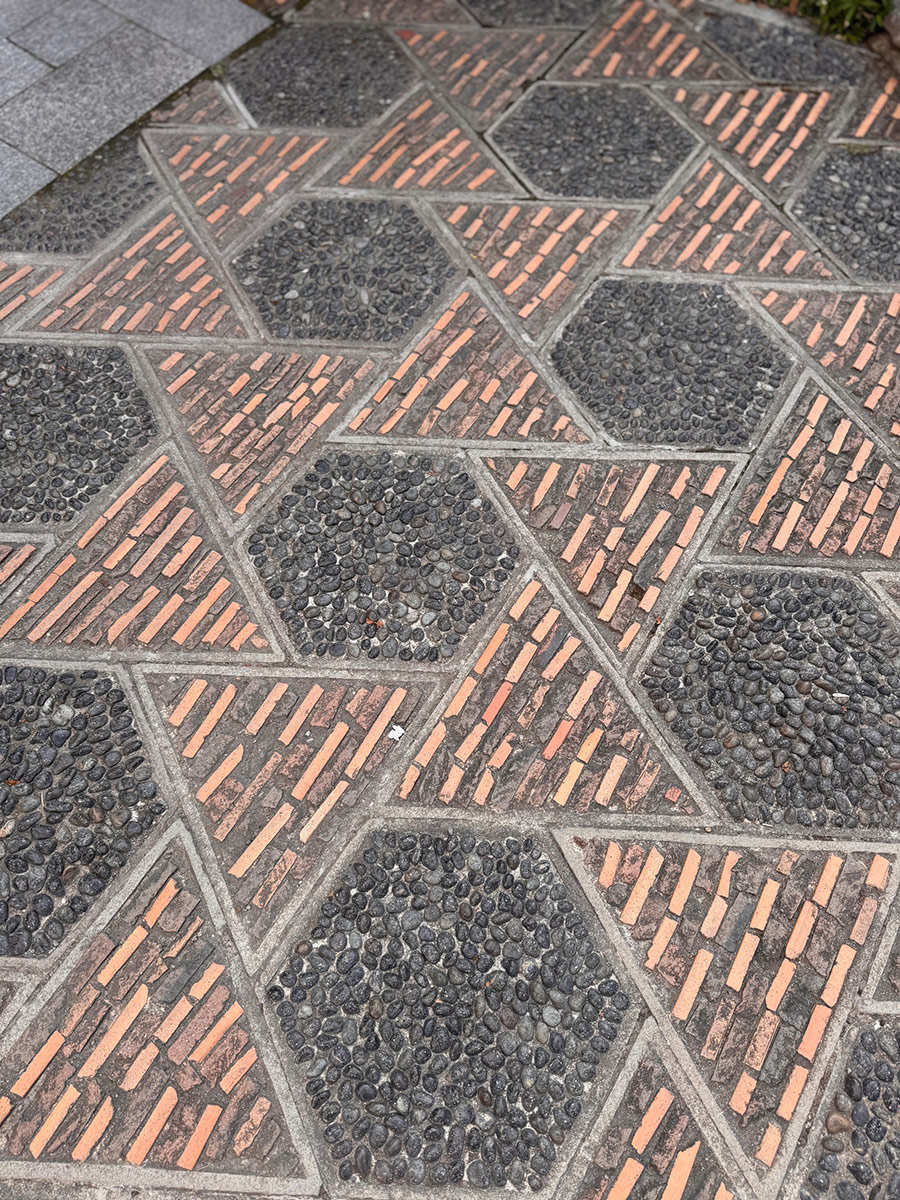 Right down to the incredibly detailed stone work you walk on.
Right down to the incredibly detailed stone work you walk on.
As I said in the intro, we’ll be exploring the Chinese Garden at Montreal Botanical Garden with Cherry again tomorrow. We’ll be moving out of the courtyard and serene Dream Lake Garden, so be sure to keep an eye out!
And be sure to let us know what your penjing was in the comments.
Have a garden you’d like to share?
Have photos to share? We’d love to see your garden, a particular collection of plants you love, or a wonderful garden you had the chance to visit!
To submit, send 5-10 photos to [email protected] along with some information about the plants in the pictures and where you took the photos. We’d love to hear where you are located, how long you’ve been gardening, successes you are proud of, failures you learned from, hopes for the future, favorite plants, or funny stories from your garden.
Have a mobile phone? Tag your photos on Facebook, Instagram or Twitter with #FineGardening!
Do you receive the GPOD by email yet? Sign up here.
Fine Gardening Recommended Products
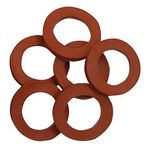
Gilmore Rubber Hose Washer 10pk
– Live red rubber construction, 3/4in. washers
– Clip of 10
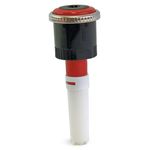
Hunter Industries MP-1000-90 Hunter Nozzle
– 8′ to 15′ radius with an adjustable arc of 90° to 210°, radius can be reduced by up to 25% to fit landscape needs
– Double-pop technology flushes the nozzle during start-up and shutdown to prevent clogging
– Wind-resistant, multi-directional streams provide even coverage

Morvat Heavy Duty Brass Y-Valve
– Instantly create two tap outlets with this ultra-durable Y hose splitter. The dual-valve design features built-in shut-off valves.
– Fitted with US Standard NH 3/4″ threads for use with most water source fittings
– Screw the 2 way splitter adapter by hand or wrench with the updated hexagonal top connection. The 360° rotatable swivel connection attaches to any water source.
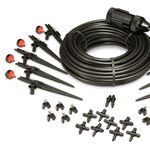
Rain Bird PATIOKIT Drip Irrigation Patio Watering Kit
– Complete 42-piece drip irrigation kit eliminates watering by hand
– Provides drip irrigation for up to 6 planters
– Easy to assemble: just attach to faucet, cut tubing and connect watering devices
– Attaches easily to your outdoor faucet or hose
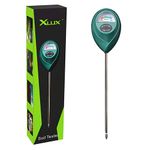
XLUX Soil Moisture Meter
– Large and clear dial, including ten scales, plug and read
– Simply insert the moisture meter into soil and you’ll get the test result instantly
– Single probe, less hurts to the roots, doesn’t dig up too much soil after test








